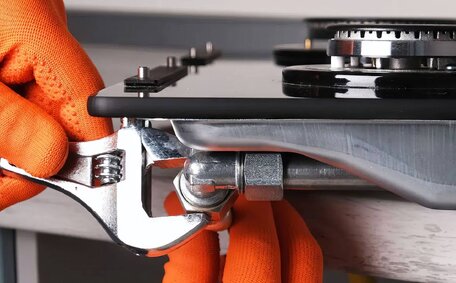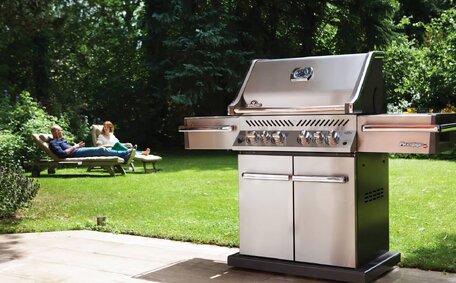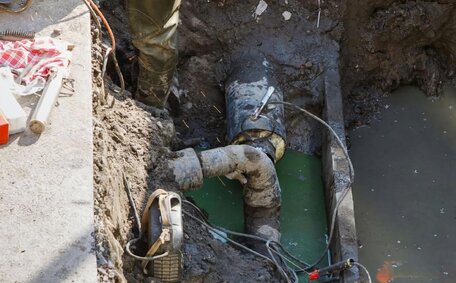
The role of gas fitting in kitchen renovations
When renovating your kitchen, it’s important to engage a licensed gas fitter to safely install, replace or alter any gas appliances and pipes. This ensures
Read MoreThe choice of a hot water system significantly influences the comfort of your home, especially for larger families. With a wide range of options, making a selection may appear daunting, but we’re here to make it effortless for you.
Based on settings, safety elements, and efficiency that we have been discussing, here are five of the top hot water systems that could be a suitable match for your family needs:
Choosing the right hot water system can be a daunting task, which is why we’ve laid out some key considerations for you. Our experts can help you make a well-informed decision that suits your family needs and optimises the comfort in your home.
Don’t hesitate to email, call, or schedule an online appointment with Cecil Hills Plumbing.
Tackling your hot water system’s settings can change with the shifting seasons, enhancing your home’s comfort and efficiency. In this guide, we will explore the ideal settings for your hot water system across various seasons.
By understanding how the flow rate of your hot water heater changes during the coldest or hottest time of the year, you can increase benefits like energy savings and optimal comfort.
Regulating the temperature of your water heater is critical both from a safety standpoint and for achieving maximum energy efficiency. By setting your water heater to the recommended 60-65 degrees Celsius, you can stave off harmful bacteria growth while avoiding the scalding risk.
The exception is in locations where your hot water tank is used for personal hygiene, like bathrooms, where 50 degrees is the upper limit—lower still in spaces for the young, old, or infirm, where the highest setting should be no more than 45 degrees Celsius.
Equally considerable are factors like the size of the household and the type of hot water system, whether that be tankless, gas storage, electric storage, heat pump, or solar. Each comes with unique considerations for temperature setting, underpinning the necessity of hiring professional services when dealing with adjustments to your hot water temperature.
With an overview of what the article will cover, let’s delve deeper into understanding how you can nab the advantages of the correct hot water settings throughout the varying seasons of the year.
Stay with us, and we’ll equip you with the knowledge to manage your hot water heater, guaranteeing a comforting, energy-efficient environment in your household.
Ensuring safety and comfort for yourself and your loved ones involves understanding the ideal hot water system settings. Ensuring safety and comfort for yourself and your loved ones involves understanding the ideal hot water system settings.
You should set your water heater to operate within this temperature range to prevent harmful bacteria and reduce the risk of potential scalds.
There are specific areas within homes or facilities – those defined for personal hygiene like bathrooms, for instance – where it is necessary to have the water temperature set lower; a maximum ceiling of 50 degrees Celsius prevents the incidence of accidental scalding and makes for a safe environment.
When dealing with areas that cater to a broad demography, such as early childhood centres or nursing homes, the maximum heater temperature should not exceed 45 degrees Celsius.
This lower limit ensures that the water is comfortable and safe regarding temperature.
One useful tool to control temperature at all times would be to install a convenient tempering valve. A tempering valve is incredibly helpful for it keeps your water heater steady at the required temperature and ensures its compliance with Australian Standards.
Should you need to adjust temperature your heater, it can be done with ease by simply turning the thermostat dial or pressing a button on the heating unit.
However, keep in mind that there are different types of hot water heaters such as tankless water heaters, gas storage, electric storage, heat pumps, and solar, each with unique considerations and thermostat setting recommendations.
The task of setting your hot water system is not just about efficiency and comfort, but it also significantly revolves around the use-case. Different activities require varying temperatures, the countenance of which is crucial for both safety and effectiveness.
If you are running a dishwasher, for example, a higher temperature is usually more desirable as it ensures optimal cleaning. Major manufacturers recommend the water heater temperature to be around 60 degrees Celsius for dishwashing purposes. This hot water cuts grease, disinfects your utensils and ensures the detergent works effectively.
Another common use is taking showers where the recommended temperature is much lower, around 38 to 40 degrees Celsius. However, it’s important to remember that for young or elderly individuals, this temperature may still be too high. So, installing thermostatic mixing valves is recommended to keep temperatures below 45 degrees Celsius for safety.
This temperature provides comfort without the risk of scalding.
Healthcare institutions and care facilities have specific requirements. To reduce the risk of Legionella bacteria, their water tank must maintain a minimum of 60 degrees Celsius. But they should use mixing valves to supply water at a safer, lower temperature for personal use.
The transition of seasons, from summer’s sizzle to winter’s chill, may require you to turn off your hot water heater to adjust the settings. These slight seasonal modifications ensure your system operates at its peak efficiency, optimising savings on energy bills while providing comfort amid spiralling temperatures.
During the cold months, water entering your hot water system is substantially colder, this can also lead to longer heating times and increased energy consumption.
To offset this, you might need to increase your system’s setting slightly to maintain the desired hot water level. To offset this, you might need to increase your system’s setting slightly to maintain the desired hot water level.
Conversely, in warmer periods, the incoming water is often tepid, reducing the amount of energy needed to bring it to your preferred temperature. You can potentially dial down the settings on your hot water system, achieving the same hot water level at a lower setting.
This arrangement can save energy and money – you can save money, making a visible difference on your utility bills.
While making seasonal adjustments can seem daunting, it’s made simpler with new water heater technologies. A simple tweak of the thermostat dial or button can strike an optimal balance between cost, comfort, and compliance.
If you’re uncertain, it’s recommended to contact professional plumbing services for guidance.
Understanding optimal settings for different types of hot water systems can enhance your usage experience, which can ensure safety and efficiency. Here, we’ll be shedding light on the best temperature ranges for varying hot water system types.
Regardless of the type, regular checks and professional servicing of your hot water system are crucial to ensure optimal performance, precaution and efficiency. For assistance or inquiries, you can reach out to Cecil Hills Plumbing, your local experts in plumbing services.
In managing hot water systems, customers often encounter several issues, primarily related to fluctuations in the flow hot water during different seasons. One common expectation is to have a steady supply of hot water, consistent in temperature, irrespective of the season. However, this often isn’t the case during extreme weather conditions.
In colder months, you may note a decrease in water temperature. This is often due to the heating capacity of the system being exceeded by the drop in external temperatures. Conversely, during warmer seasons, the water might become excessively hot due to the thermostat’s failure to balance the heat.
Another common concern is the duration of optimal operation of the hot water heater. Customers look for a happy medium between comfort and energy usage, only to be displeased by rising bills during peak seasons.
These problems can be mitigated by adjusting hot water system settings to align with the changes of the seasons.
Regular maintenance checks of the hot water system are also important, providing opportunities to identify and rectify issues early, before they exacerbate. With our cadre of experienced professionals, problems associated with your hot water system will be swiftly solved, leaving you more relaxed and in control.
If the common problems you’re experiencing might be due to issues with your hot water system such as sediment build-up, don’t hesitate to reach out to Cecil Hills Plumbing for professional assistance.
When the seasons sneak upon us, one must ensure their hot water system is up to the task, providing the perfect balance between hot water comfort and energy-saving efficiency. Here are some of the key aspects to keep in mind.
For a smoothly functioning water heater, including the upkeep of components like the anode rod, consider scheduling routine check-ups and adjustment services with Cecil Hills Plumbing as the seasons change.
As the seasons change, you may face some usual issues with your hot water system. But, no worries, these problems are easily manageable. Here are some strategies that can assist in solving these issues:
If you find these tips aren’t solving the problem, it’s advisable to call up the professionals. Cecil Hills Plumbing is more than capable of diagnosing and resolving any issues with your hot water system.
A programmable thermostat plays an essential role in managing your hot water system efficiently, offering noteworthy benefits throughout the seasons. By auto-adjusting the water temperature according to pre-set conditions, it enhances safety, eradicates the need for manual adjustments, and contributes directly to energy efficiency.
From a safety perspective, a programmable thermostat minimises the risk of accidental scalding by managing the water temperature within an acceptable range, offering great comfort especially when there are young children or elderly people at home.
This feature becomes particularly useful in washrooms and other hot water outlets, where a sudden surge of excessively hot water can cause harm.
In terms of energy efficiency, the pre-set temperature adjustments of a programmable thermostat according to different times of the day and various seasons can save substantial amounts of energy. It optimises the hot water system performance by reducing unnecessary heating during low usage periods or compensating for falling temperatures during the cold season.
As for convenience, the automated temperature control means you no longer need to worry about making manual adjustments. Whether it’s transitioning between seasons or dealing with changing water usage patterns, a programmable thermostat ensures you have optimal water temperatures throughout the year, effortlessly.
For help choosing and installing a programmable thermostat, don’t hesitate to contact Cecil Hills Plumbing, your local experts dedicated to resolving your plumbing needs.
When renovating your kitchen, it’s important to engage a licensed gas fitter to safely install, replace or alter any gas appliances and pipes. This ensures
Read MoreGas line repairs require a licensed plumber to locate any leaks, fix damaged pipes and fittings, and properly seal everything to prevent future issues. Contact our emergency plumbers for safe and proper gas line repairs.
Read MoreDuring emergency plumbing situations, crucial safety precautions include turning off the main water supply to prevent flooding, wearing protective gear to avoid injuries, clearing standing water to minimize damage, and calling a licensed professional plumber for assistance.
Read MoreCecil Hills, 2171 NSW
We will call back as soon as possible.




